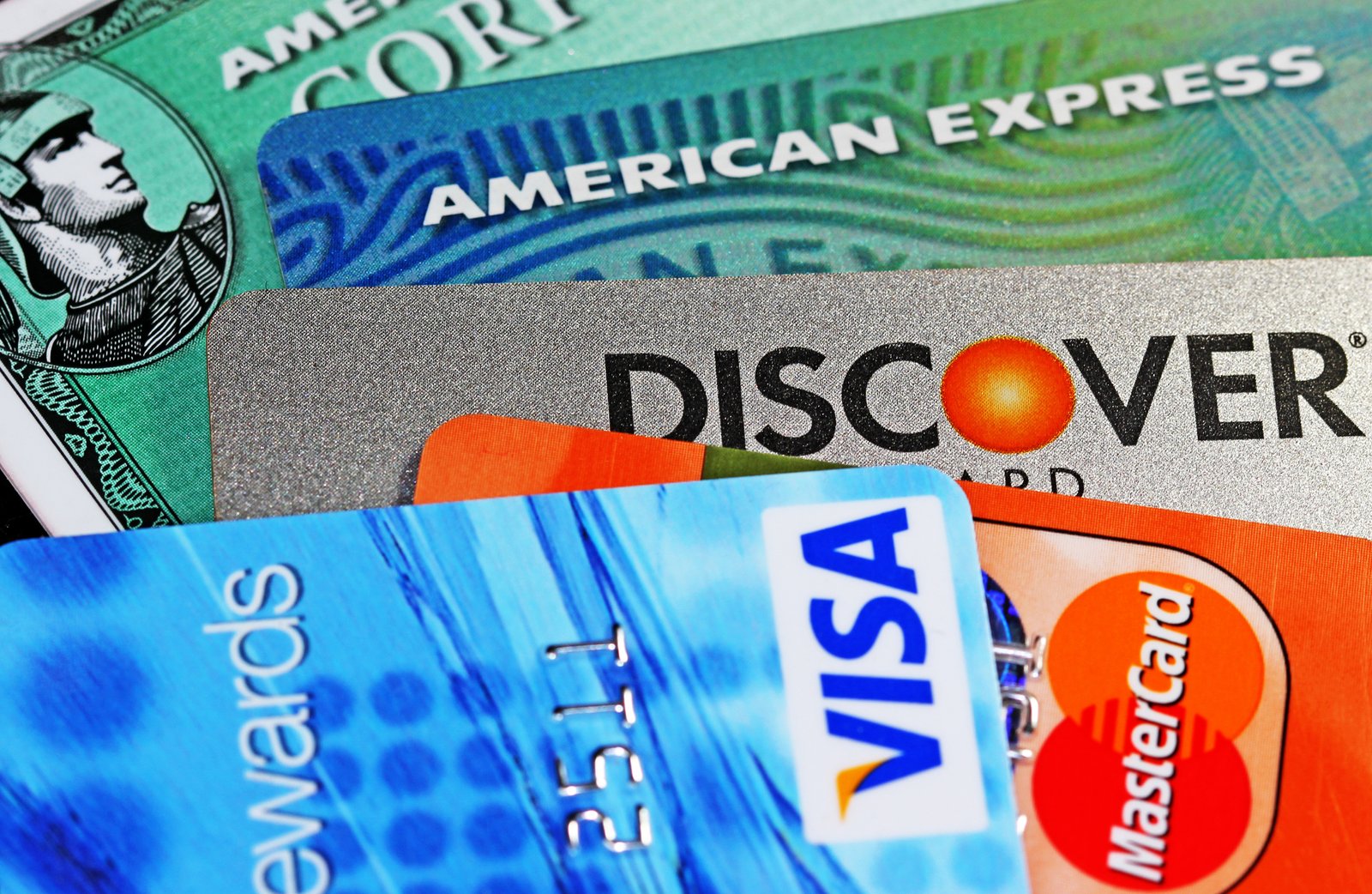Unlock Business Growth: Your 2025 Guide to Top Business Credit Cards & Market Trends
In today’s fast-paced business world, the right financial tools aren’t just a convenience—they’re a cornerstone of success. Business credit cards have firmly established themselves as essential assets for entrepreneurs and established companies alike, offering a potent mix of tailored rewards, streamlined expense management, and crucial financial flexibility.
As we navigate May 2025, the landscape of business finance continues to evolve. This comprehensive analysis dives deep into current market trends, unpacks the leading business credit card options, and explores emerging innovations that every business owner should consider to optimize their financial strategy.
The Business Credit Card Boom: Market Overview & Growth Trajectories
The business credit card market is not just growing; it’s thriving in 2025. Key indicators point to a significant surge in adoption and market expansion:
- The market, valued at USD 35.23 billion in 2023, is on a trajectory to hit USD 52.28 billion by 2029, boasting a Compound Annual Growth Rate (CAGR) of 6.80%[1]. This impressive growth is fueled by the increasing embrace of digital payment methods, a rising tide of small and medium-sized businesses, and expanding corporate spending capabilities[1].
- Dubbed “the Year of the Credit Card,” 2025 is seeing application levels soar to their highest since pre-pandemic days[2]. Industry giants like Chase and American Express reported record-high application volumes in Q4 2024, a momentum clearly carrying into the new year[2].
- Recent Federal Reserve data echoes this sentiment, showing credit card applications at peak levels with approval rates steadily climbing—a testament to both consumer confidence and easing credit standards[2].
Consumer behavior underscores this trend:
43% of US consumers opened a new credit card account in the past year. Gen Z leads the charge with a 68% adoption rate, followed by Millennials at 35%[2]. Perhaps most tellingly, credit cards have become the
most in-demand banking product across both retail and commercial sectors for the last two years, outshining traditional staples like checking accounts, savings accounts, and loans[2].
The Digital Ripple Effect: Transforming Business Cards
It’s not just credit cards experiencing a digital makeover. The humble business card is also undergoing a significant transformation:
- The global digital business card market, valued at $159.4 million in 2022, is projected to skyrocket to $505.2 million by 2032, growing at an impressive CAGR of 12.6%[3].
- This shift is significantly driven by environmental consciousness, especially when considering that approximately 88% of paper business cards are discarded within a week[3][4].
- By 2025, digital business card adoption is notable, with around 37% of small businesses and 23% of individuals using apps to promote their brands[5].
- QR codes are proving particularly effective, boosting user engagement by 20% when featured on business cards[4].
- North America currently leads the digital business card market with a 30% share, followed by Europe (25%), Asia Pacific (25%), South America (10%), and the Middle East & Africa (10%)[3].
Decoding Value: Essential Business Credit Card Features in 2025
Choosing the right business credit card requires a clear understanding of what makes a card truly valuable for your specific operations. Here’s what to look for:
Welcome Bonuses: Capitalizing on Initial Offers
Welcome bonuses remain a powerful incentive in 2025, often outshining personal card offers. These typically require meeting a spending threshold within the first few months. For example, the
Chase Ink Business Unlimited® Credit Card offers a $750 bonus after spending $6,000 in the first three months[6]. Assess if your business can comfortably meet such requirements to maximize these upfront benefits.
Rewards Structures: Aligning Benefits with Your Spending
Modern business credit cards offer highly customizable rewards. Cards from American Express and Capital One, for instance, provide enhanced rewards for travel booked through their platforms, while others automatically adjust rewards based on your top spending categories[6]. This tailoring allows businesses to maximize returns without actively managing categories.
Annual Fees: Weighing Long-Term Costs
Annual fees can range from $0 (like the Ink Business Unlimited®) to $395 for premium travel cards (some Capital One Business offerings)[6]. Increased market competition has led to better value, with many no-annual-fee cards now offering competitive rewards previously reserved for premium tiers.
Credit Requirements: Understanding Eligibility
Most business credit card applications in 2025 still necessitate good to excellent personal credit scores (typically 700+)[6]. You’ll generally need an Employer Identification Number (EIN) or Social Security Number (SSN), your official business name, contact information, and details about your legal structure. For new businesses lacking an established credit history, personal credit scores often play a primary role.
Top Business Credit Card Contenders for 2025
Here are some leading options that stand out in the current market:
- Chase Ink Business Unlimited® Credit Card: A versatile choice offering unlimited 1.5% cash back on all purchases, a $750 welcome bonus (after $6,000 spend in 3 months), and a 0% introductory APR on purchases for the first 12 months. No annual fee[6].
- American Express Blue Business® Cash™ Card: Known for simplicity, this card offers 2% cash back on eligible purchases up to $50,000 annually (1% thereafter). New cardholders can earn a $250 statement credit (after $3,000 spend in 3 months), plus enjoy a 0% introductory APR on purchases for 12 months. It also includes perks like secondary car rental insurance and extended warranty protection, all with no annual fee[6].
- Bank of America Business Advantage Unlimited Cash Rewards: An excellent option for businesses with limited credit histories. It provides 1.5% cash back on all purchases with no annual fee[6]. The secured version requires a refundable security deposit ($1,000 – $10,000), which sets your credit limit and helps build a credit foundation[6].
- Brex Business Credit Card: A standout for funded startups, requiring no personal guarantee[6]. Credit limits are based on company funding, not personal scores. Rewards are optimized for startup spending: 7x points on ridesharing, 4x on travel, and 2x on software[6]. Generous point bonuses are available for new account deposits and initial spending[6].
Strategic Choices: Cash Back vs. Travel Rewards
The decision between cash back and travel rewards remains pivotal.
- Travel Rewards: With business travel rebounding, these cards offer significant value through points/miles for flights and hotels, plus premium perks like lounge access and primary rental car insurance[6].
- Cash Back: These cards appeal to businesses with diverse operational expenses, offering straightforward savings. Some, like the Ink Business Unlimited®, even allow cash back to be converted into travel points, offering a hybrid approach[6].
In 2025, there’s a growing preference for cards offering flexibility between both cash back and travel rewards, allowing businesses to adapt to changing needs[7].
The Credit Equation: Impact on Business and Personal Finances
Building Business Credit Responsibly
Responsible use of business credit cards is crucial for establishing a strong business credit profile. Opt for cards that report to business credit bureaus[6]. Consistent, on-time payments and maintaining low balances are key to building a robust credit history, which can unlock better loan terms and financing opportunities down the line.
The Business-Personal Credit Nexus
The link between business and personal credit remains complex. While intended for business expenses, personal credit often influences approval[6]. Most cards require a personal guarantee, making the cardholder personally liable for defaults. Issuers vary in their reporting practices; Capital One, for example, reports activity to both personal and business credit bureaus[6]. Vigilant financial management is essential to protect both credit standings.
Beyond Rewards: Additional Business Credit Card Perks
Modern business credit cards offer more than just points and miles:
- Expense Management Tools: Many cards integrate seamlessly with accounting software like QuickBooks, simplifying bookkeeping and financial oversight through automated tracking and reporting[6]. Authorized user cards with customizable spending limits also offer greater control over employee expenses[6].
- Enhanced Travel Benefits: Cards geared towards frequent travelers can offer up to 5% cash back on travel expenses[6]. Premium options like The American Express Business Platinum Card provide access to over 1,400 airport lounges, while the Capital One Venture X Business card offers 5X miles on flights and 10X miles on hotels and rental cars booked via its portal[6].
- Zero-Interest APR Periods: These introductory offers (often 12 months or more) allow businesses to finance significant purchases or investments without incurring interest, aiding cash flow management during growth phases[6].
The Human Touch: Consumer Behavior & Card Design Insights
Even in a digital age, presentation matters:
- First Impressions: Research shows 72% of people judge a company or person based on their business card design[4]. A staggering 39% might avoid doing business with someone presenting a “cheap-looking” card[4].
- The Enduring Role of Physical Cards: Despite digital advancements, 57% of business owners believe physical business cards remain essential for in-person marketing[4].
- Design Trends for 2025: Cards featuring unusual letterforms and creatively integrated QR codes are gaining traction[8]. Including a photo on a business card makes it twice as likely to be kept[4].
- Networking Power: Professionals exchange an average of 4-7 business cards per networking event, highlighting their continued relevance in face-to-face interactions[4].
Making the Informed Choice: Your Path Forward in 2025
Selecting the right business credit card in 2025 hinges on a careful evaluation of your unique business needs, spending habits, and long-term financial goals. The market is rich with options, catering to everyone from fledgling startups to established enterprises seeking premium travel perks.
It’s worth noting the current financial climate: the average APR for existing card accounts stands at
21.37% as of Q1 2025, with new offers averaging
24.28%[9]. These figures underscore the importance of choosing cards with favorable interest terms, especially if you anticipate carrying a balance. With the total credit card balance in the United States reaching
$1.182 trillion in Q1 2025[9], the significance of these financial tools in business operations is undeniable.
By understanding market dynamics, meticulously comparing your options, and aligning card features with your precise business requirements—be it maximizing cash back, unlocking travel benefits, or building a solid credit history—you can harness the power of business credit cards to support your objectives and fuel sustainable growth in today’s dynamic landscape.
References:
[1] GlobeNewswire – Business Credit Cards Market Forecast
[2] The Financial Brand – 2025 Will Be the Year of the Credit Card
[3] QRCode Chimp – Digital Business Card Statistics
[4] Wave Connect – Business Card Statistics
[5] QR Code Tiger – Digital Business Card Statistics
[6] Internal Document: Top-Business-Credit-Cards-in-May-2025.txt
[7] GWI – Credit Card Trends
[8] VistaPrint – Business Card Trends
[9] LendingTree – Credit Card Debt Statistics





